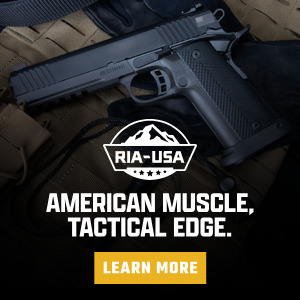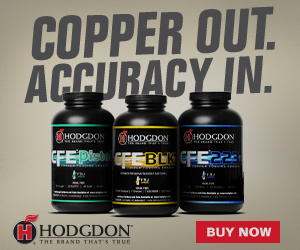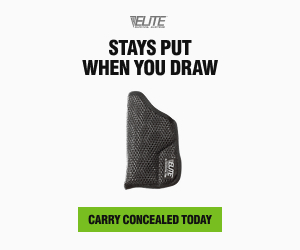The 9mm carbine is a popular firearm for many reasons. Some of us live in an area that requires a relatively long trip to the firing range to fire rifle caliber long guns. The 9mm carbine may be fired in handgun ranges. Inexpensive ammunition is another incentive. It isn’t difficult to find fifty rounds of 9mm for the price of twenty rounds of .223. That makes for a lot of practice. The 9mm will not do what a rifle caliber will do and if the long gun will be used past 50 yards you need a .223. But the 9mm is a viable choice for home defense. I don’t own an AR 15 9mm. A few years ago I obtained a Smith & Wesson FPC (Folding pistol caliber carbine) The FPC is reliable and accurate as well as fast handling and easily stored away. The FPC feeds steel cased loads and the hottest +P ammunition with equal enthusiasm. Accuracy is greater than I would have expected. The 9mm carbine is a friendly easy to use firearm. If you own a 9mm handgun and want commonality with the carbine that’s fine but if you don’t have a 9mm pistol the 9mm carbine also looks good. You will be up to speed and capable of greater accuracy much more quickly than if you are attempting to master a handgun. For home defense this is an important consideration.
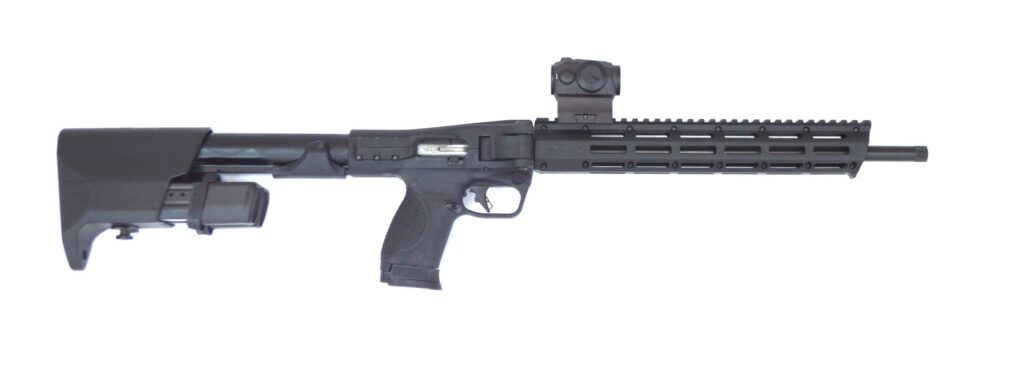
The author’s SW FPC is a light reliable and effective carbine.
Ammo Choices
The 9mm Luger is an efficient little cartridge. Designed to burn clean in the Luger’s 4 inch barrel the 9mm makes the most of a small powder charge. As a result you don’t gain a lot of velocity in a 16 inch carbine barrel. There is some gain and it differs from load to load but overall the increase is modest. In comparison the .357 Magnum with its large case and heavy charge of slow burning powder gains as much as 600 fps in a carbine length barrel. For hunting the Magnum wins the contest but that isn’t the role the 9mm carbine is designed to fill. The 9mm stows away easily kicks little and offers good wound ballistics. It is what it is and nothing more but what it is is very good. I am repeating the word efficient a lot because it fits.
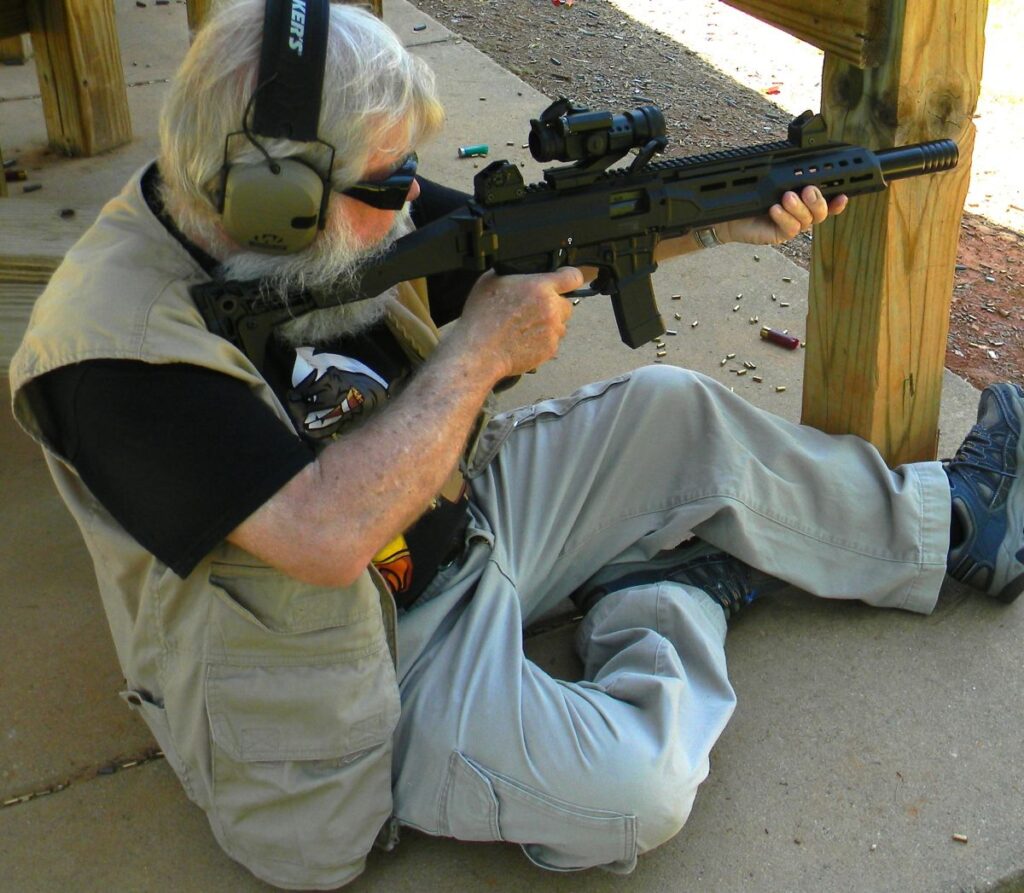
The author getting down to business with a CZ Scorpion 9mm.
Unless you are serving with a select budget team or have filed the necessary paperwork to own a SBR your carbine will have a 16 inch barrel. The 9mm HK type pistols and various SMGS have shorter barrels. The 9mm must burn clean and reliably in these barrels. The 9mm then seems ideal as a SMG and personal defense carbine cartridge. It is very nearly ideal in the home defense application. The 9mm often demonstrates a full powder burn even in short barrels. Some practice ammo and especially foreign steel case ammunition exhibits sparks and muzzle flash in most any 9mm. They don’t have the powder technology we do in America. That’s ok for training and practice. Defense loads most often demonstrate little muzzle flash in barrels of 4 inches or more- sometimes a warm orange glow. Another concern is bullet performance. Some have considered the 9mm carbine raises velocity to the point a bullet intended to expand at handgun velocity will fly apart and over expand in a carbine length barrel. The velocity increase isn’t that great and modern bullets such as the Gold Dot and XTP don’t fly apart. But there are a loads that fragment. Most combinations perform well at the range of velocity demonstrated by standard and +P loads. That doesn’t mean that every load that performs well in a handgun will be optimal in the carbine. It simply means that loads intended for institutional service use- using the HST, Hydra Shock or Gold Dot bullet as an example- will perform well. Often they expand more and penetrate slightly more, not less, in the carbine. As an example the Speer Gold Dot 124 grain load penetrated more in ballistic testing with the carbine. The Speer Gold Dot 135 grain load, optimized for the carbine, penetrated a little less and expanded more when fired in the carbine compared to firing tests with a pistol.
Rules to live by
Some pretty expensive 9mm carbines are gas operated. The Kel Tec, High Pont and S&W carbines are blow-back operation. The gas operated guns are more finicky in cycle reliability. The 9mm isn’t giving them a lot of gas to work with. With loads they run with they run and run well. With others they may choke. I use blow-back operated 9mm carbines. This is a pistol caliber carbine so don’t expect rifle cartridge velocity. I have experimented with 9mm Luger handloads in the FPC including MAJOR loads. I loaded slower burning powder. I used these loads in the S&W SPEC V pistol as well. (The more reaction mass the more powder the more efficient the compensator. ) This worked well in the pistol. It was great fun! In the carbine I managed to break 1,513 fps with a handload using the Hornady 124 grain XTP and AutoComp powder. Case expansion and primers seemed normal. Recoil was insubstantial. But I had the feeling I get when I overeat, overspend, have too much ice cream or too little exercise. I was going against the odds and perhaps I just shouldn’t be doing things the way I was. So- if you are running a carbine in PCC competition Federal offers the 130 grain Syntech loading. It is a great load, very accurate. Or use a similar handload. While the carbines have a heavy bolt and strong chamber they are not necessarily stronger than a locked breech handgun.
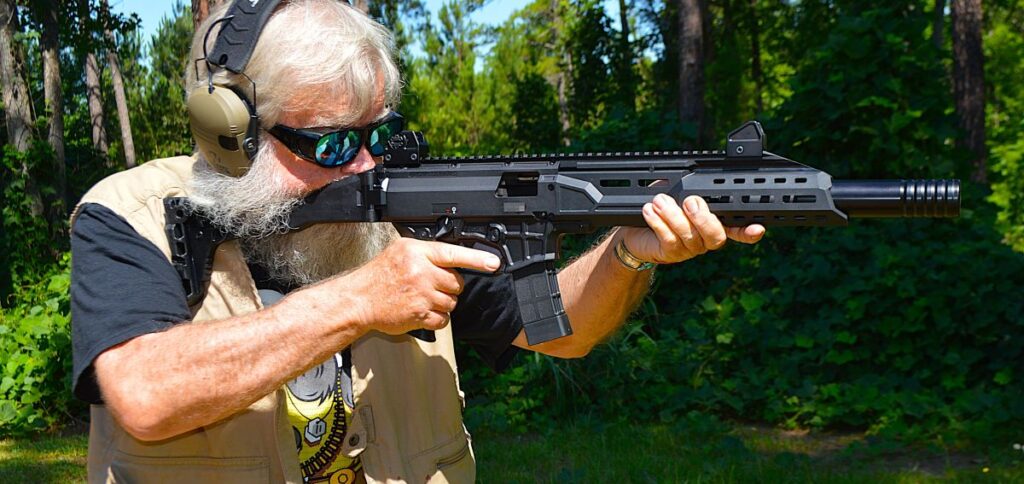
The CZ Scorpion is a great shooter.
9mm Carbine Loads
An advantage of the 9mm carbine is demonstrable to 50 yards or so. The rules of point of aim and point of impact are changed compared to a pistol. Dwell time and muzzle flip are different. Muzzle flip is practically inconsiderable. 115, 124, and 147 grain projectiles may be counted on to hit the same point of aim with only a small amount of fine tuning needed. Practice ammunition is plentiful. For PCC and practice loads I use the same handloads put up in bulk for the handgun. A Hornady HAP, FMJ, or XTP, 124 grain, with Titegroup powder, loaded to 1100 fps in a handgun barrel. This load performs well in any 9mm firearm. I have loaded the 147 grain XTP at 880 fps (Glock 17) and found it to exhibit greater accuracy potential at a long 100 yards. That’s a stunt, the 9mm at 100 yards, but an enjoyable experiment. Chasing accuracy with the 9mm carbine yields interesting results. With the Kel Tec Sub 2000 a neat little lightweight folding carbine it isn’t difficult to cut a single ragged hole at 25 yards. At longer ranges the SW FPC shows an advantage. The FPC will do 3 inches at 50 yards with most loads. Don’t be surprised to find a pattern rather than a group with some loads, especially steel cased, at this range with any 9mm carbine. Careful load development makes a difference. At a long 100 yards a six inch group from a bench-rest is good. Understand the capabilities of the firearm. If you want a fast handling lightweight foldaway defense 9mm carbine that is good performance. You would not be helpless at longer range but 25 yards is where we are making the bet. If you wish to own a superb shooter at 100 yards and don’t mind more weight and a less compact package the CZ Scorpion carbine is a great shooter. It is almost in a class by itself. The magazines do not interchange with a handgun and the piece is pricey. It is a very good carbine however.
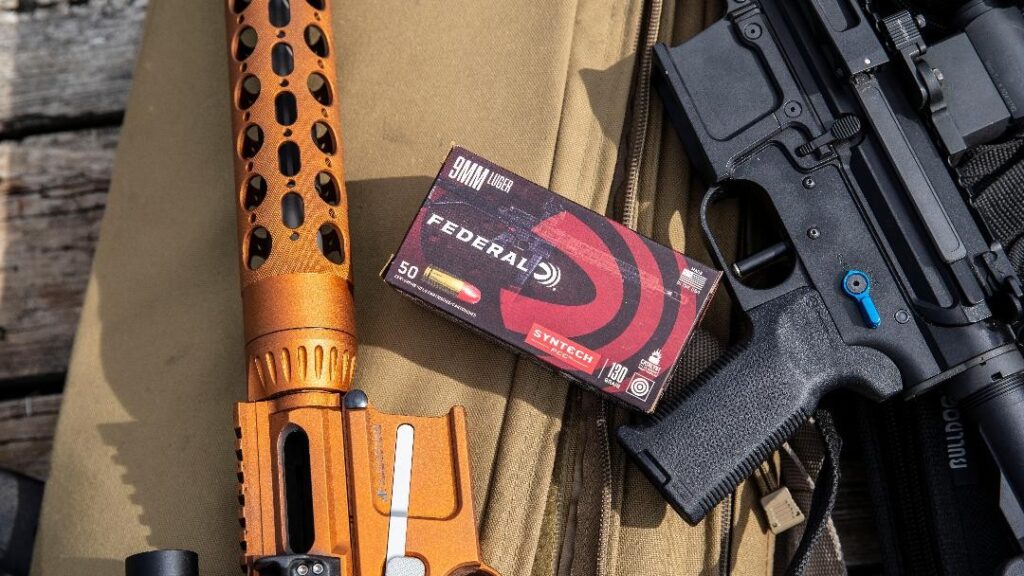
Federal offers first quality loads specifically designed for the 9mm carbine.
Performance
I am going on the assumption that most of us wish to own the 9mm carbine because we own a 9mm handgun. It is a proven theorem. After World War Two the Europeans adopted 9mm service pistols and the 9mm became a NATO standard. Since they had 9mm handguns they adopted 9mm SMGs. Pretty simple. In testing 9mm carbine ammunition I took two tracks. First I tested defense loads that are considered top performers in the handgun. I tested them in the carbine, and I also tested loads designed for the carbine. Would they perform well in the pistol? Is there are good all around loading? In an ideal world we would have our Glock 43 loaded with the Speer 124 grain Gold Dot Short Barrel Load, the Glock 17 with Federal’s 124 grain HST and the SW FPC with the Speer 135 Gold Dot carbine load. But shortages have taught us we cannot always specialize our ammunition as much as we would like.
Lets look at some of the velocity readings I was able to qualify. I used a Glock 19 9mm and the SW FPC carbine.
Federal 147 grain HST +P
This is a little known loading that makes the most of the 147 grain weight. It is maximized for a full powder burn in handguns. Velocity gain was only 49 fps in the carbine.
Glock 19 1050 fps
SW FPC 1099 fps
I had a limited supply of Speer 147 grain Gold Dot and fired this in only the carbine.
SW FPC 1105 fps
In a carbine a standard pressure load may actually exhibit more velocity than a +P as the +P is formulated for pistol barrels. You need a chronograph!
Next a real screamer.
Lehigh 90 grain
Glock 19 1367 fps
SW FPC 1439 fps
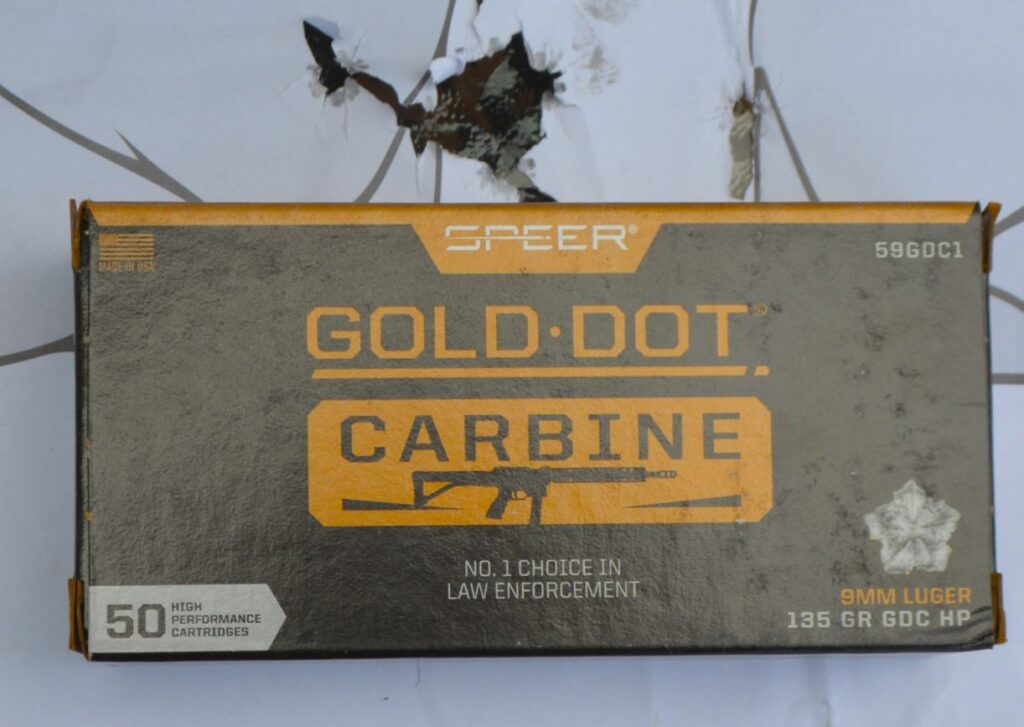
The Speer Gold Dot 135 grain carbine load is an outstanding loading with plenty of energy, momentum, weight, expansion and penetration.
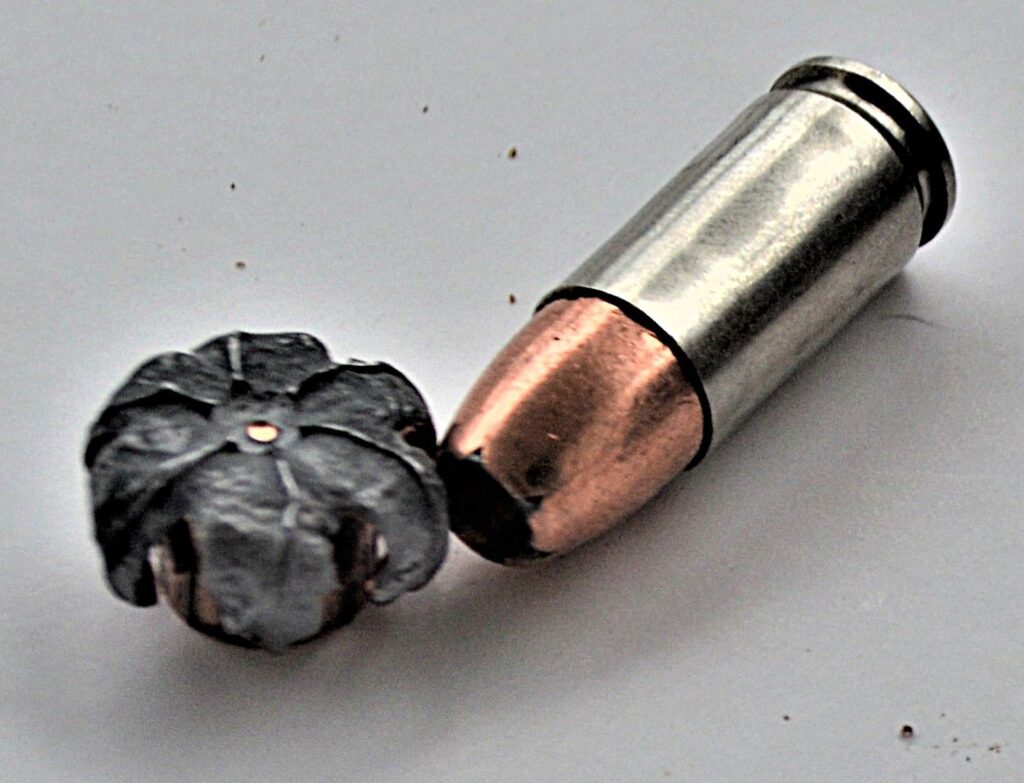
This is the Speer Gold Dot. Expansion is excellent.
Next came what I consider the all around test that would qualify 9mm carbine performance. The great advantage of the carbine is in shot placement. It is much easier to quickly fire accurately with the carbine. Accuracy can take the place of power the reverse is seldom true. We want the greatest accuracy out of the carbine. With quality ammunition accuracy is practically a given but we should test our loads to be certain. We also wish to maximize wound potential. This means a good balance of expansion and penetration. Penetration is everything. Once we have secured penetration we should strive for expansion to 1.5 the original diameter of the bullet. These loads have that. I have tested the following combinations before but I broke out the Clear Ballistics Gel and re-shot the tests. It was like watching a favorite movie again. I enjoyed it and no surprises but always some nuances clearer each time. The Federal 135 grain Gold Dot carbine load is especially formulated for good carbine performance. In a handgun it is a formidable loading as well. If you desire a load with the balance more toward penetration the carbine load is equal to the 147 grain HST in my opinion. By the same token if you stock up on the Gold Dot 124 grain you have a good load. Shot placement is the key. Just the same if you are able to do so the carbine load should be laid in for emergency use as it clearly maximizes the caliber.
Speer Gold Dot 124 grain +P
Velocity reading Glock 19 1239 fps
SW FPC 1301 fps
Ballistic test
Penetration and expansion Pistol 18.5 inch .69 expansion
Carbine 20.5 inch .74 expansion
Speer Gold Dot 135 grain Carbine
Velocity reading Glock 19 1101 fps
SW FPC 1254 fps
Ballistic test
Penetration and expansion Pistol 16.5 in .56 expansion
Carbine 14.5 in .64 expansion
Federal 124 grain HST +P
SIG P365 3.1 inch barrel 1140 fps
Glock 19 1220 fps
SW FPC 1380 fps
Penetration and expansion
SIG 16 inches .63
Glock 19 15 inches .66
SW FPC 8 inches .80
The 124 grain +P is a good load- but velocity is well beyond this loads design envelope. In a carbine the bullet fragmented. So- the carbine can over-stress pistol ammunition as far as expansion goes. If you feel you absolutely must have low penetration – which I don’t recommend- this load is formidable. Interesting enough if you add a few layers of clothing in front of the gelatin blocks the load retains penetration- but I would have to run a clothing layer test with all loads to be fair. This underscores the need for careful load selection.
The 9mm is an interesting blend of precision at personal defense ranges, economy, and utility. I enjoy the 9mm carbine a great deal and find it among the best choices for a combination of recreation and personal defense. For the handloader and accuracy crank it is a fertile field.


